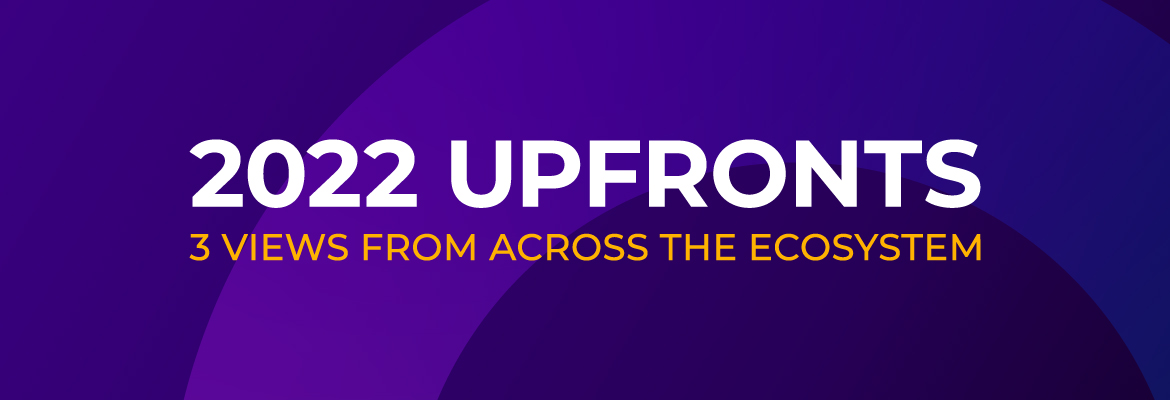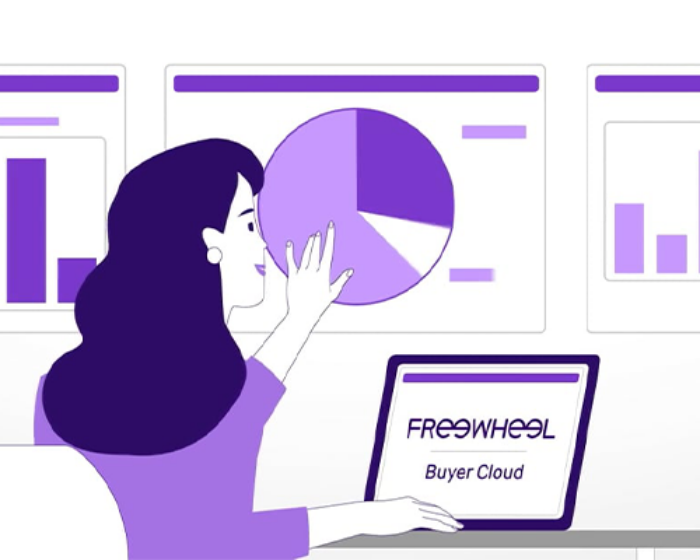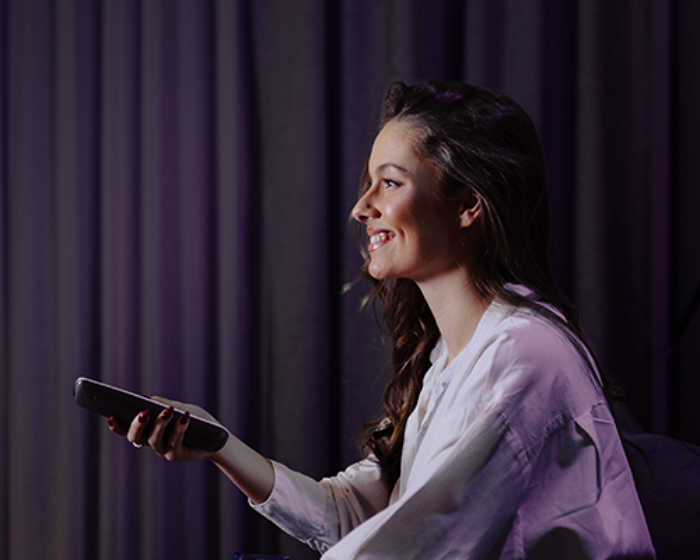In several ways, this year’s Upfronts represent a turning point for marketers and media companies. Building upon the trends highlighted in 2021, the 2022 fronts made one thing abundantly clear: the continuing fragmentation of viewer habits requires evolution of almost all TV advertising and marketing activities.
Streaming is here to stay. Viewers are consuming multiple types of content via multiple devices and platforms, including their primary home TVs. And premium television transactions are increasingly automated. Creating new models and techniques to address and keep pace with these changes will require strong relationships and greater communication among agencies, publishers, and their tech partners.
FreeWheel hosted a panel of experts from leading media agencies and premium publishers to discuss trends and expectations for this year’s Upfronts and beyond. Panelists included Susan Schiekofer from GroupM, Carolina Portela with IPG/Magna, Ashley Luongo of NBC Universal (NBCU), and Jill Steinhauser from Warner Bros Discovery.
I was honored to moderate this lively discussion, from which there were three main takeaways – the convergence of linear and streaming video, the growing role of automation, and the need to work better together. Below are some highlights from that discussion.
Linear and Streaming: Coming Together
Advertising-supported video on demand (AVOD). Subscription-supported video on demand (SVOD). Free advertising-supported television (FAST). When you combine linear viewing with all the streaming options that are available to consumers, things quickly get complicated for marketers seeking to reach audiences who see all this programming as “just TV.” To address this, Upfronts have restructured to reflect the convergence of linear and streaming. Those restructuring efforts focus on aligning with content that stands out and on how to move beyond demographic targeting to reach specific audiences more effectively.
As Carolina Portela said, it’s increasingly important to “look at video from a more holistic standpoint. Previously, we had linear, we had digital. Now, we’re just talking about video, and how we can best find our audiences, wherever they’re watching premium content.”
Where buying choices are concerned, “it can’t be a mutually exclusive choice between platform and content,” added Ashley Luongo. “There’s no surrogate for incredible IP [intellectual property]. There’s no substitution for the chills you get when you watch the Olympics of the Super Bowl. We can’t allow platforms to commoditize and democratize inventory.”
Automation: Shifting Offline to Online
Marketers and agencies want real-time metrics and insights to monitor performance to optimize their campaign. They want to do this while also having their messaging alongside the most compelling content that pulls viewers in. Both buyers and sellers also want the flexibility to place messaging against the most popular content without being restricted by rigid deal types.
Our panelists spoke of the evolution of investments strategies and how they require more flexibility across deal types depending on the marketer’s goals. “It’s important that as buyers move to automation, they understand what that means in terms of the inventory they get access to,” Jill Steinhauser said. “We spend a lot of time in constant conversation, teaching, learning, and testing to make sure this move works for the buyer.”
Working Together, a Critical Success Factor
Ultimately, agencies, publishers, and ad tech companies serve the same two sets of stakeholders: the marketers who control the ad spend and audiences who watch the content. This means continuing to balance the need to manage yield across publishers with the need to maximize return on investment (ROI) for marketers.
Panelists agreed that working better together and transparency among all elements of the value chain are essential to everyone’s success. “What’s different this year is that everyone is asking for the same thing. Everyone’s trying to solve the same problems, which provides a lot of opportunity,” Carolina said. In this evolving environment, “we look at tech partners as facilitators,” Ashley added.
The Future is Now
If the current state of TV viewing tells advertisers and marketers anything, it’s that what was good enough in the past will not suffice anymore. To reach and influence viewers, campaigns and advertising content must evolve to align with accurate, diverse viewer profiles and deliver consistent messages that reinforce each other. And agencies, advertisers, marketers, publishers, and their technology partners must make their efforts more integrated, proactive, and flexible to evolve as viewer behaviors continue to change.
There is both much work to do and many great opportunities to pursue. As we do so, we should keep in mind the words of Joe Chernov, who AdWeek named one of the 100 most creative people in advertising. “Good marketing makes the company look smart. Great marketing makes the customer feel smart.” It will be both fascinating and instructive to see how convergence and change have played out during the 2023 Upfronts.



